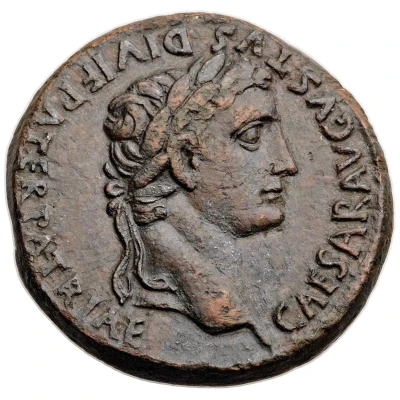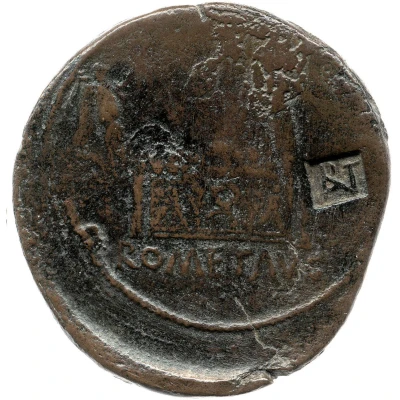Sestertius - Augustus ROM ET AVG; altar of Gauls
| Bronze | - | - |
| Issuer | Rome › Roman Empire (27 BC - 395 AD) |
|---|---|
| Emperor | Augustus (Caius Octavius) (27 BC - 14 AD) |
| Type | Standard circulation coin |
| Years | 9-14 |
| Value | 1 Sestertius = ¼ Denarius |
| Currency | Denarius, Reform of Augustus (27 BC – AD 215) |
| Composition | Bronze |
| Shape | Round (irregular) |
| Technique | Hammered |
| Demonetized | Yes |
| Updated | 2024-10-06 |
| Numista | N#247694 |
|---|---|
| Rarity index | 100% |
Reverse
Altar of the three Gauls in Lugdunum, flanked by Victory holding wreath on column on each side, front decorated with corona civica flanked by nude male on each side.
Script: Latin
Lettering: ROM ET AVG
Translation:
Romae et Augusto.
To Rome and the emperor (Augustus).
Interesting fact
One interesting fact about this coin is that it features an image of an altar dedicated to the Roman gods, which was a symbol of the Roman Empire's power and influence. The altar depicted on the coin is believed to have been built by Augustus himself, and it was meant to commemorate his military victories and reinforce the idea of Roman dominance. The coin's design, therefore, serves as a representation of the Roman Empire's military prowess and its role in spreading Roman culture and religion throughout its territories.



